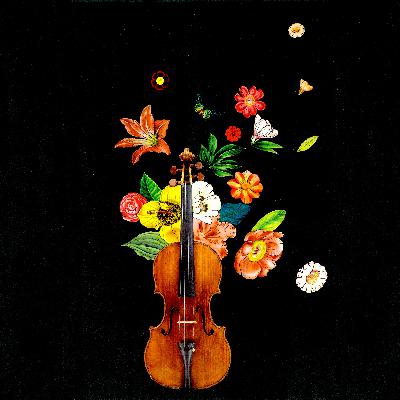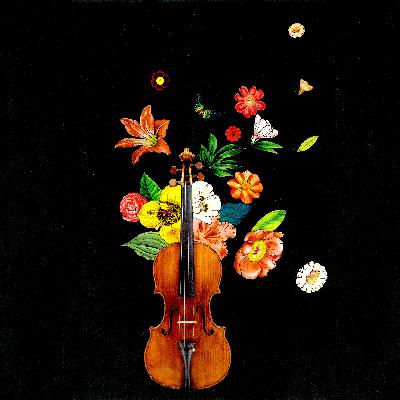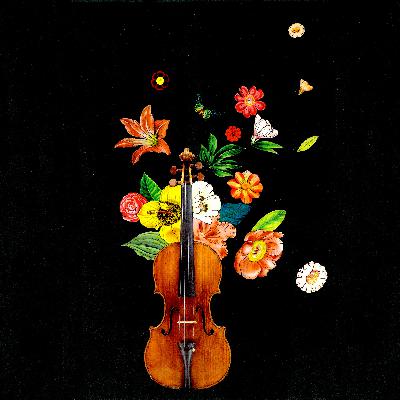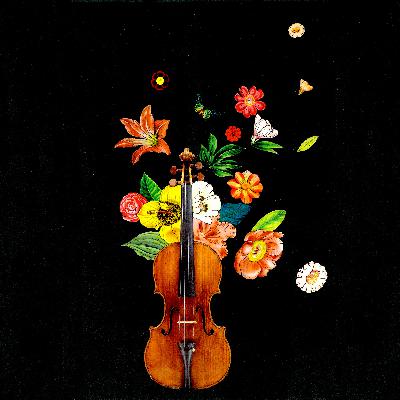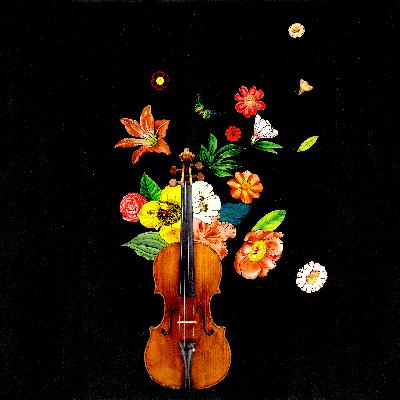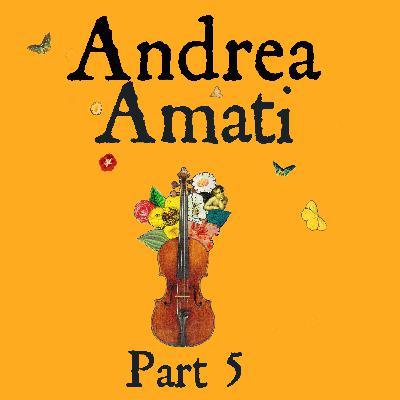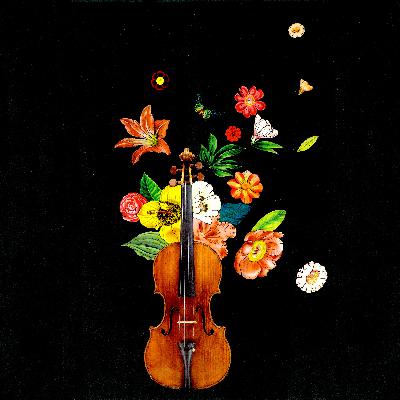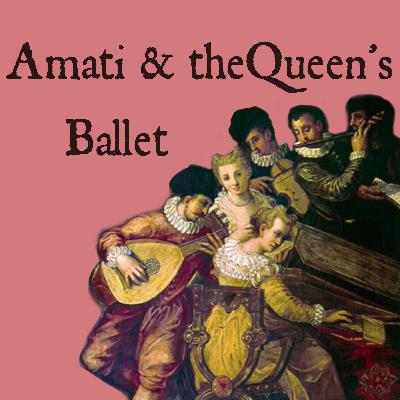Ep 10. The Amati Brothers ”Fraternal Fallout: When Brothers Collide” The age of the Viola.
Description
Continue listening to the tale of the Amati brothers to help understand who made which instruments from now on.
Is the violin making center of Italy the most boring city in the world? Well, we will see what 16th century tourists think in this episode continuing the story of the master violin makers that are the Amati Brothers. Violin maker and expert Carlo Chiesa talks to us about the Amati Brothers and why they had such a big falling out as does Oxford based violin expert Benjamin Hebbert. We hear from Ilya Isakovich violinist in the Australian Chamber Orchestra who plays on an Amati Brothers violin and the history of that particular violin.
Transcript
In the autumn of 1441, in the city of Cremona, a great wedding was taking place between two powerful families. The bride, 16 year old Bianca Maria Visconti, was the daughter of the Duke of Milan, and the groom, 40 year old Francesco Sforza, was a brave warrior and trusted advisor to the Duke. As the wedding feast was being prepared, disaster struck. A great drought had struck the land, and the city of Cremona was left without the necessary ingredients to create a grand dessert for the occasion. The cooks and chefs frantically searched for a solution, but to no avail. Desperate, one of the chefs had a brilliant idea. He decided to take what little sugar and almonds they had left and mix them together with some honey. He cooked the mixture until it became a soft, chewy confection that could be cut into small pieces. He then shaped the nougat, or torrone, into the form of the city's famous Torazzo bell tower. When the wedding guests were served the nougat, they were amazed at the sweet, nutty flavour and chewy texture of the new dessert. They exclaimed that it was the most delicious treat that they had ever tasted, and they begged the chef to reveal the secret of its creation. From that day on, the recipe for the nougat was passed down from generation to generation, becoming a beloved part of Italian culinary tradition. The nougat was said to have been a symbol of the ingenuity and creativity of Italian chefs, who could turn even the most meagre ingredients into something truly magical.
This is the legend of Cremona's Nougat, and to this day you can buy Nougat shaped as the Torazzo Tower.
Hello and welcome to the Violin Chronicles, a podcast in which I, Linda Lespets, will attempt to bring to life the story surrounding famous, infamous, or just not very well known, but interesting violin makers of history. I'm a violin maker and restorer. I graduated from the French Violin Making School of Mirecourt some years ago now, and I currently live and work in Sydney with my husband Antoine Lespets, who is also a violin maker and graduate of the French school, l'Ecole Nationale de Luthier, in Mircourt.
As well as being a luthier, I've always been intrigued with the history of instruments I work with, and in particular, the lives of those who made them. So often when we look back at history, I know that I have a tendency to look at just one aspect, but here my aim is to join up the puzzle pieces and have a look at an altogether fascinating picture.
Welcome back to the story of the Amati brothers. In the last episode, we left them in the midst of a busy and productive period in their lives. Girolamo Amati, the youngest brother, is now a widower after his wife Lucrenzia died shortly after the birth of their daughter Elizabeth. The brother's father, Antonio Amati, has passed away and Cremona, being Cremona, was insanely busy with its influx of merchants and soldiers passing through, and never far from drama and disaster, as we will see.
Because of continual war and armies marching through the town, the walls were in a sorry state, but life ploughed on as usual, and no matter how bad things got, people still wanted music, and musicians still needed instruments. Towards the end of the 16th century, 1583, Cremona was described as a city filled with sumptuous buildings, both private and public. There were an abundance of temples and monasteries, wide and spacious streets. The walls of the city have almost completely fallen to the ground due to the numerous wars in the region, and the villages around the walls were ruined. One traveller to Cremona at the time was a little bit nonplussed by the place.
This is an excerpt from a 16th century tourist writing what appears to be a type of lonely planet guide. His name is Maximilian Mission and his book is ‘A New Voyage to Italy Together with Useful Instructions for Those Who Shall Travel Hither’.
We followed the course of the Po at some distance. Until we came over against Cremona, where we crossed over the river in a ferry boat. There are no bridges on the Po below Turin. Cremona is seated on the left bank of the river in the Duchy of Milan. It is a pretty large city, but even poorer and less populous than Piacenza. There is nothing at all to be seen in it, though its tower and castle are very much extolled. One of their authors has the confidence to tell the world that the Tower is reckoned to exceed all others in height, and for that reason, esteemed one of the wonders of Europe. And that the castle is the strongest and most formidable citadel in Italy.
If I had not been accustomed to the lofty and hyperbolic expressions of the Italians, I should have been strangely surprised, after all these rodomonts. To find nothing at Cremona worth observation. The castle is an old, shapeless, and half ruined mass, which in its very best state deserved not to be compared to a well contrived fort, but perhaps might have been reputed tolerable in the days of crossbows. And the tower is neither handsome nor very high, but inferior to a thousand that are not so much as mentioned. It was built by Frederick Barbarossi in the year 1184. There is a tradition that the Emperor Mondi and Pope John the 23rd went up this tower with a certain Lord of Cremona who repented afterwards as he several times declared that he did not throw him down from the top to bottom, merely for the rarity of the thing. And perhaps it was this story that gave the first occasion to the reflections that had been made on the height of the tower. The inhabitants of Cremona boast much of the antiquity of their city, but they produced not any monuments to confirm it. The antiquity of Cremona has a very near resemblance to that of the Po. In the distance of 14 miles from Cremona to Mantua, we saw nothing but hamlets that deserved not to be named. Only Bozzolo is a sort of little city enclosed with certain works which pass for fortifications. It gives title to a duke who, besides his place, is sovereign of a territory that extends four or five miles. We passed Oglio in a ferry boat, and great and rapid. Apparently boring as it was. The city was doing okay, but the effects of war were beginning to show. The walls might have been in a bad state, but in town there was a movement amongst the monasteries and local congregations towards creating new foundations. These included orphanages. There were colleges for youth education, boarding schools, a conservatory opened in 1587 to welcome young girls in danger, that is, who did not have a dowry and risked therefore to take a bad path. The Jesuits built a magnificent new church in 1602. The Church of St. Peter and Marcelino. For women, there were sisters who taught in the schools and boarding schools. They dedicated themselves to the education of young girls who belonged to the most distinguished and wealthy families of Cremona. These nuns were not pushed into seclusion. They are interesting in that they were free to go to the local church, leave the buildings when they wanted to, and embark on charitable works in the community, such as looking after the poor schools. This gave a particular atmosphere to the city, with many in the religious orders out and about. In the spring of 1584, Girolamo Amati married for a second time. His first wife, Lucrenzia, had died shortly after the birth of their daughter, Elizabeth. And now, Laura Medici Lazzarini, niece of a prominent nobleman, and a distant cousin to the famous Banking Medici's.
At the time of Girolamo Amati and Laura's wedding, the city of Cremona was thriving. The factories in town were working at full speed, especially in the textile sector, where wool and moleskin employed a large part of the population. The city was growing as the factories were expanding, and the nobles and rich merchants were building palaces and stately homes. The Amatis were now a well respected family. Andrea Amati had finally been able to buy their house a few years before his death, and now his sons, the brothers, Antonio Amati and Girolamo Amati, had inherited both the house and a prosperous business. They made instruments for important people, nobles and royal families.
Girolamo Amati’s marriage to a member of the lesser nobility shows an overlapping of the respected artisan class and the more wealthy noble class. Laura's dowry would have helped as well, but as with his first wife Lucrenzia, Girolamo Amati had to share Laura's dowry with his brother Antonio Amati as he was now head of the family.
I spoke to Carlo Chiesa, researcher, author, and violin maker in Milan.
Why is he called Hieronymus sometimes, and it's a Latin name, Hieronymus is the Latin from Geronimo. So I use the Italian, but it's the same name.
And on, on his labels it's, Hieronymus. He uses a Latin form, Hieronymus. Is it always Hieronymus?
No, sometimes it is Geronimo but the reason is that if you use the Latin name, it is Hieronymus. So for foreign, not Italian speaking people, I understand Geronimo is a bit difficult to remember and Hieronymus is much easier because it's also German and the English form for Geronimo.
So I think that's it. It's just is Latin.
No, come o

